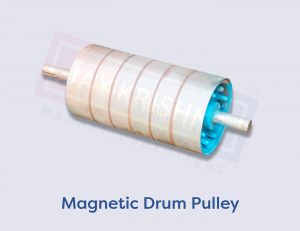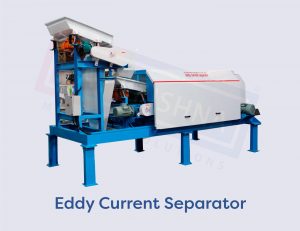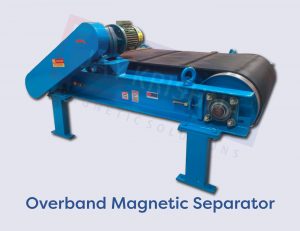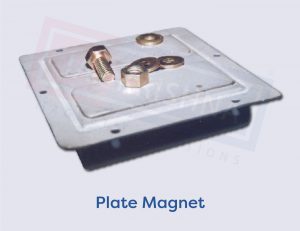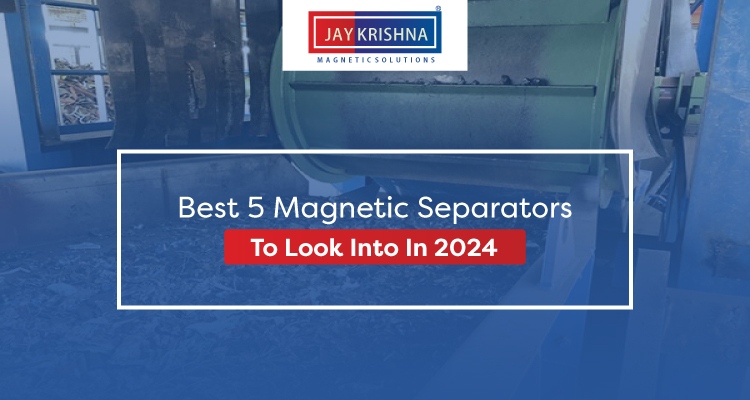How To Choose The Right Magnetic Separator For Your Applications or Process?
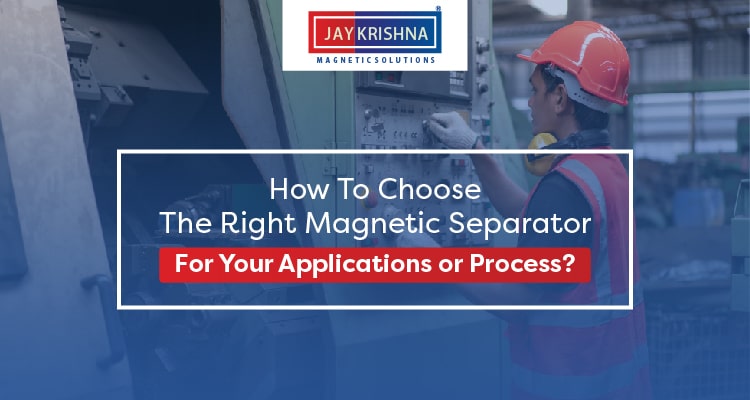
Introduction
Installing the right magnetic separator is a necessary step for increasing operational efficiency and productivity. The selected magnetic separator should stand the test of time and meet various challenges of industrial applications,
Picking the wrong magnetic separator will make it hard to separate impurities from the product and will lead to poor separation results and product damage.
On the other hand, picking the magnetic separator correctly is critical to the success of the separation process. The right magnetic separator will lead to superior separation of impurities, improved productivity, low maintenance and repair costs, and quality end products.
To better understand which is the right magnetic separator for your application, let’s go over some key considerations and details of various magnetic separators for different applications.
Disadvantages Of Installing A Wrong Magnetic Separator
If your processing line is equipped with the right magnetic separator, it will capture metallic impurities easily and deliver a quality final product meeting industry standards.
However, installing the wrong magnetic separator offers numerous disadvantages that can lower your business profitability.
- Incorrect magnetic separator installation can lead to
- Costly downtime
- Frequent machine repair
- Poor level of ferrous metal separation and recovery
- Higher product loss
- Low productivity
- More metal contamination
- Damage to equipment
- Insufficient protection
How To Choose The Right Magnetic Separator?
Selecting the right type of magnetic separator for your application or process depends on various factors. To determine which magnetic separator will best suit your application needs, several factors need to be considered.
These factors are metal contamination type, process feed method, flow rate, material flow characteristics, operating temperature, cleaning method, size, and magnetic strength requirement.
Let’s discuss these in more detail for better decision-making.
1. Type of Metal Contamination
The first and one of the most important considerations is the type of metal contamination. What is the product you are separating impurities from? What is the size and type of contamination? Is it primary or secondary contamination?
These are some of the questions you need to get answers to identify which magnetic separator will be appropriate for your application.
If your product has larger pieces of tramp metal, such as nuts, bolts, or screws, consider installing low-intensity magnetic separators. Whereas, if your product has smaller or fine particles, such as stainless steel, consider installing high-intensity magnetic separators.
2. Process Feed Method
The next thing to question is how the product is conveyed through the process. Is it gravity, pneumatic, mechanical, or free-fall fed? Determine the process feed method and select the magnetic separator that works ideally.
3. Process Flow Rate
Another thing to consider is the process flow rate, where you need to check out the product volume passing through the process. Choose the magnetic separator size and design as per the volume of the product.
4. Material Flow Characteristics
Every unique type of material has different flow characteristics. Various materials, such as dry free-flowing goods, powders, granules, or wet viscous products flow in different ways.
Hence, it is important to select a magnetic separator that can provide enough space and a way to allow the product freely.
5. Operating Temperature
Extreme temperatures can affect the magnetic separator’s performance and efficiency. Some magnets can even lose their magnetic strength if operated at high temperatures.
Hence, it is essential to specify the operating conditions and temperature and select the best quality magnetic separator that can work under the toughest pressure and temperature.
6. Cleaning Method
The two types of cleaning options available in magnetic separators are automatic and manual.
Manual cleaning requires human efforts to pull or wipe off any metal contaminants present on a magnetic surface. On the contrary, the automatic cleaning option releases every metal contaminant from the surface without having to come in contact with it.
Auto-cleaning is found helpful for a magnetic separator with rare-earth magnets, which is difficult to clean due to its powerful nature.
Now if you require your magnetic separator to clean manually and stoppage is allowed, you can opt for a magnetic separator with a manual cleaning facility. Whereas if you require continuous process or periodic cleaning, install a magnetic separator with an auto cleaning feature.
7. Magnetic Strength Requirement
The stronger the magnet the better its performance, Right?
Absolutely, wrong! To determine the appropriate type of magnetic strength and magnetic separator material, you need to first define the type of metal you are extracting.
As discussed above in the first point, for larger ferrous impurities, low-strength magnets and for smaller ferrous impurities, high-strength magnets are suitable.
In addition to this, the type of product influences the design of magnetic separators. To give an example, if you require a magnetic separator for the food industry, a magnetic separator needs to be manufactured with food-grade materials for product hygiene and safety.
8. Magnetic Separator Size
Lastly, the type and size of the magnetic separator depend on the space of the production line. The size won’t be the issue of a large processing line with enough space. Instead, their main focus will be on equipment construction and how rigorously it can operate in challenging situations.
Now in the case of smaller production lines, there will be a requirement for space-saving and compact magnetic separators.
Ending Note
Selecting the right magnetic separator is extremely important, and every manufacturer wants to make sure they install the right one that meets the application requirements.
If you install the wrong, you’ll be facing higher contamination risk, equipment damage, and many more costly concerns. Install the right, and your industry will see superior separation performance and greater productivity.
Follow above mentioned suggestions and consideration, and we are sure you will be able to select the right one for your application or process.
In case you have any questions or need help selecting the correct magnetic separator, we are here to help.
Jaykrishna Magnetics Pvt. Ltd. is a trusted magnetic separator manufacturer and supplier in India. We have decades of experience working with various industries worldwide and supplying the best quality magnetic separator that meet and exceed their expectations.
Our deep industry knowledge and expertise allow us to manufacture a wide range of magnetic separators that capture ferrous impurities from product lines with complete safety and efficiency.
For questions or more information, contact us today.
Read More:
- Magnetic Separators For Making Your Recycling Process EffectiveHigh-Quality Magnetic Separators
- How To Choose The Right Magnetic Separator For Your Applications or Process?
- Eddy Current Separator For Auto Shredder Residue Recycling

